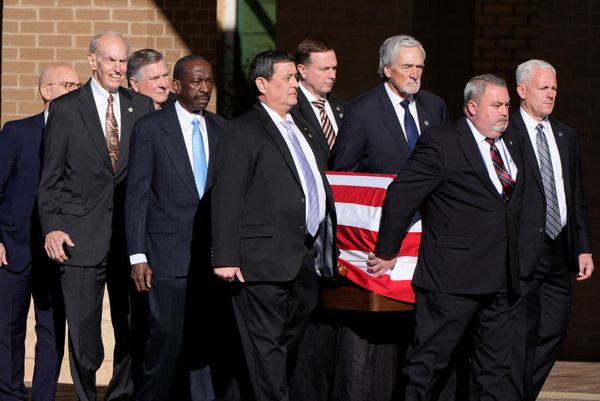
Normal services resumed in global markets Wednesday when the US Federal Reserve lifted its key interest rate by 0.25%, as widely expected, and nothing happened. More importantly, the Fed suggested just one more rate rise this year.
The minutes of the March meeting of the Reserve Bank of Australia’s board indicated there could be a rate pause in April and perhaps for a while, even though inflation remains high both here and in America. And nothing happened.
The Bank of England will lift rates tonight — possibly by as much as 0.50% because inflation climbed back over 10% to 10.4% (which no one saw coming). Markets won’t be crunched and investors won’t bolt — it seems everything is back to normal.
But it isn’t. The dismemberment of stricken Swiss bank Credit Suisse is underway, and the world’s major central banks — but not China’s — have been pumping billions of US dollars into markets to maintain global liquidity and prevent markets from following the template of the global financial crises by freezing up and locking out millions of companies and people from accessing their funds.
Working with the Fed will be the Bank of Canada, Bank of England, Bank of Japan, European Central Bank and Swiss National Bank to coordinate action and enhance the provision of liquidity through the standing US dollar-swap line arrangements.
The central banks didn’t mention an amount to be injected in the six-week operation, but it will be in the tens of billions of dollars a day. It’s a sign the central banks see the global financial system close to freezing and even collapse.
The US$120 billion deal brokered by Swiss authorities to have UBS buy rival Swiss bank Credit Suisse to prevent its disorderly collapse was designed to avoid a repeat of the impact of the collapse of Lehman Brothers on September 15 2008, when economies and markets froze for at least three months or more.
Central banks had to invent ways of keeping liquidity flowing through their financial systems, and the Fed coordinated a series of US dollar swaps with other central banks to keep liquidity alive and allow governments to continue paying and repaying each other.
The daily swaps arrangements tell us the Fed and other central banks had come to understand that the problems hitting US regional banks, and now Credit Suisse, were starting to impact liquidity elsewhere in global financial markets.
For all the rhetoric about how bad previous outbreaks of financial strain were (for example, the Greece crisis of 2009 onwards), and various “temper tantrums” by markets over quantitative easing changes, the crisis that started on March 9 is by far the most serious.
The Fed and other central banks have moved to make sure there is enough money around the banking and other financial systems to support activity for at least six weeks, which, if you think about it, is a serious outlook.
And in the aftermath, ignore all the moaning and groaning about the way the Swiss authorities forced UBS to takeover Credit Suisse and blow up $17 billion of bonds that were designed to be written off completely if Credit Suisse got into trouble and had to be rescued.
The bonds were different to similar bonds issued elsewhere in the EU in recent years by banks. And so bad had Credit Suisse’s problems become that they were trading around 35 to 40 cents on the dollar — which means in reality they were worth at most US$6.5-6.8 billion, with most of the holders’ hedge funds and other vulture investors looking for big profits.
Instead they got big losses and only have themselves to blame for not understanding the difference between these bonds and others. In many respects, they are from the same parts of the global financial system that contributed to the crisis — the private equity, venture capitalists who enjoyed Silicon Valley Bank (SVB) as their “pet” bank for all their start-ups.
When the shit hit the fan at SVB on March 9, the venture capitalists, hedge funds, private equity and other tech billionaires were all found wanting and unwilling to risk their money to save the bank — instead they called for the Fed (i.e. the government) to “do something”.
Seven of the world’s 10 richest individuals on the Bloomberg Billionaires Index are tech bros — including Bill Gates, Jeff Bezos and Google twins Larry Page and Sergey Brin. There are dozens more in the top 100, including hedge funds, private equity and venture capitalists. Many are libertarians and decry government involvement in everyday life and the economy — some support Donald Trump and right-wing causes.
All did nothing and waited for the Fed and other central banks to save the day.







